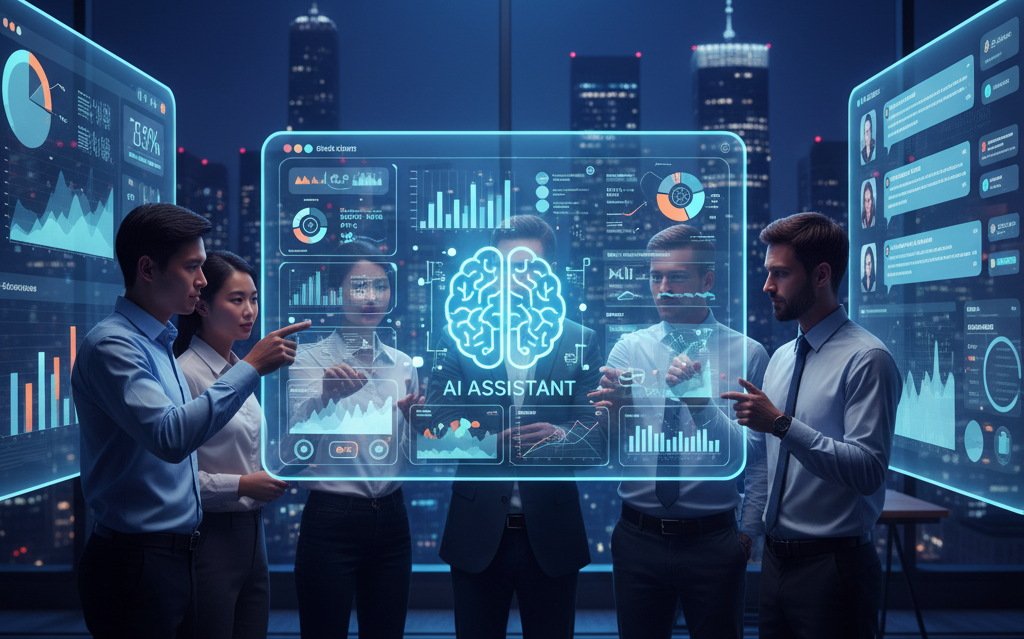
Lessons Learned: Building Custom AI Assistants for Global SaaS and D2C Brands
The Real Impact of AI Assistants in Everyday Business Operations
Artificial Intelligence has moved from being a futuristic concept to an everyday operational necessity. Across industries, AI Assistants are now powering customer service, streamlining workflows, and enabling smarter decision-making. For global SaaS and D2C brands, they are no longer “nice to have” – they are a competitive advantage.
At Product Siddha, our approach to AI Assistant development centers on real-world usability – designing intelligent systems that simplify decision-making, automate repetitive tasks, and enhance human capability. And after years of deployment across industries, one truth has become clear: building an effective AI system is as much about understanding people and context as it is about algorithms.
Lessons from SaaS and Enterprise Deployments
SaaS companies operate in fast-moving, data-rich environments where speed and accuracy directly influence user trust.
Take Notion, for example. Their AI features help users summarize, analyze, and generate insights directly inside their workspaces. By embedding intelligence into the platform itself, Notion eliminates friction – users stay productive without ever leaving the environment they’re in.
Similarly, Intercom’s AI-driven customer platform uses machine learning to triage support queries, instantly responding to common requests while routing complex ones to human agents. This hybrid model ensures accuracy and empathy coexist – the hallmark of an effective AI strategy.
These real-world examples mirror one of Product Siddha’s most successful approaches: context-driven training. When building AI systems, domain relevance often outperforms massive data volume. It’s not about training on “everything”; it’s about training on what matters.
A Real Case Study: Product Siddha’s AI Assistant for a Global Subscription Platform
A lifestyle subscription brand operating across the US and Australia approached Product Siddha to unify its customer support and operational workflows.
Challenge:
Support tickets were piling up, with repetitive billing and shipping queries consuming most of the team’s time.
Approach:
Our team built a conversational AI Assistant integrated with HubSpot and Twilio Segment. It identified customer intent, detected sentiment, and automatically resolved common issues while escalating complex cases to human agents.
Results (6 months):
- Support efficiency improved by 58%
- Average response time dropped from 12 minutes to under 2 minutes
- Customer satisfaction rose by 27%
This project reinforced an enduring principle: AI should enhance human performance, not replace it. The best systems don’t just automate – they amplify empathy, speed, and accuracy.
Building Empathy-Driven AI for D2C Brands
While SaaS systems thrive on efficiency, Direct-to-Consumer (D2C) brands rely on connection. Their AI Assistants must understand tone, emotion, and brand voice – not just intent.
Sephora’s Virtual Artist is a great example. It allows customers to virtually “try on” products while engaging with an AI that adapts its recommendations based on style, tone, and even cultural nuance. Likewise, Nykaa, a major Indian beauty retailer, uses AI-powered chatbots to communicate authentically with customers in multiple languages, reflecting local expressions and preferences.
These success stories illustrate a key truth for D2C AI design: empathy drives engagement. The most advanced technology fails when it doesn’t “feel human.”
The Core Framework for Building Reliable AI Assistants
From internal experimentation and industry observation, Product Siddha follows a five-stage framework that aligns with what leading global brands also adopt:
| Stage | Objective | Tools / Techniques |
|---|---|---|
| 1. Data Understanding | Identify tone, sources, and customer intent | Twilio Segment, HubSpot CRM, custom parsing |
| 2. Intent Design | Map user goals to conversation paths | NLP modeling, dialogue design frameworks |
| 3. Model Development | Train and fine-tune for real workflows | OpenAI API, Rasa, Python |
| 4. Integration | Connect AI with business systems | HubSpot, MoEngage, Klaviyo |
| 5. Testing & Feedback | Validate tone, accuracy, satisfaction | A/B testing, user feedback loops |
This approach ensures every AI Assistant is scalable, context-aware, and continuously learning – essential traits for long-term adoption.
Industry Lessons from the Field
1. Data Quality Trumps Quantity
Leading firms like HubSpot and Salesforce have shown that curated, high-quality data yields more reliable AI outcomes than massive, unfiltered datasets. The context behind the data matters more than the volume of it.
2. Integration Must Be Intentional
Over-automation can overwhelm teams or break workflows. Slack’s AI-powered summaries and Intercom’s escalation system both succeed because they balance automation with human oversight. The goal isn’t full automation – it’s intelligent augmentation.
3. Measurable Impact Takes Time
AI systems improve through use. Metrics such as resolution rates, response latency, and sentiment accuracy stabilize only after months of feedback and retraining. Shopify’s predictive AI, for example, has evolved gradually to anticipate customer intent without intruding on their journey.
The Future: Predictive and Proactive Intelligence
The next phase of AI Assistants goes beyond reacting to user queries – they’ll start anticipating intent. Predictive personalization, as seen in platforms like Salesforce Einstein and Shopify Magic, already reduces user friction and drives loyalty by suggesting what customers need before they ask.
At Product Siddha, we’re evolving our AI frameworks toward anticipatory intelligence – systems that help businesses act, not just respond. When done right, this doesn’t just improve operations; it transforms how teams think and work.
Final Thought: Building AI That Understands Humans
From Austin to Amsterdam, and from Mumbai to Manchester, AI Assistants are reshaping how global brands engage with customers. The most successful systems don’t just understand language – they understand people.
Technology succeeds when it empowers human capability, not when it replaces it. That’s the vision driving Product Siddha’s AI innovation: creating intelligent systems that make decisions smarter, interactions more meaningful, and businesses more human.
